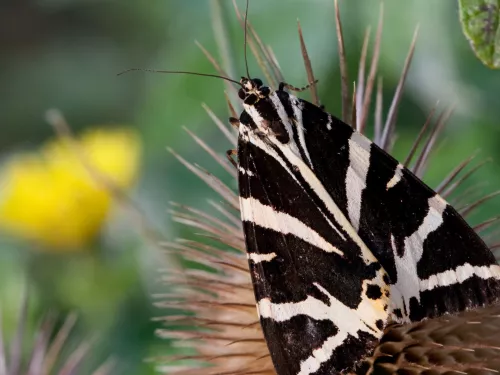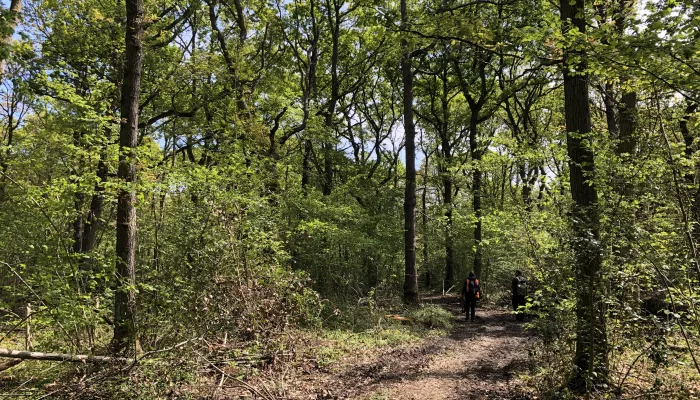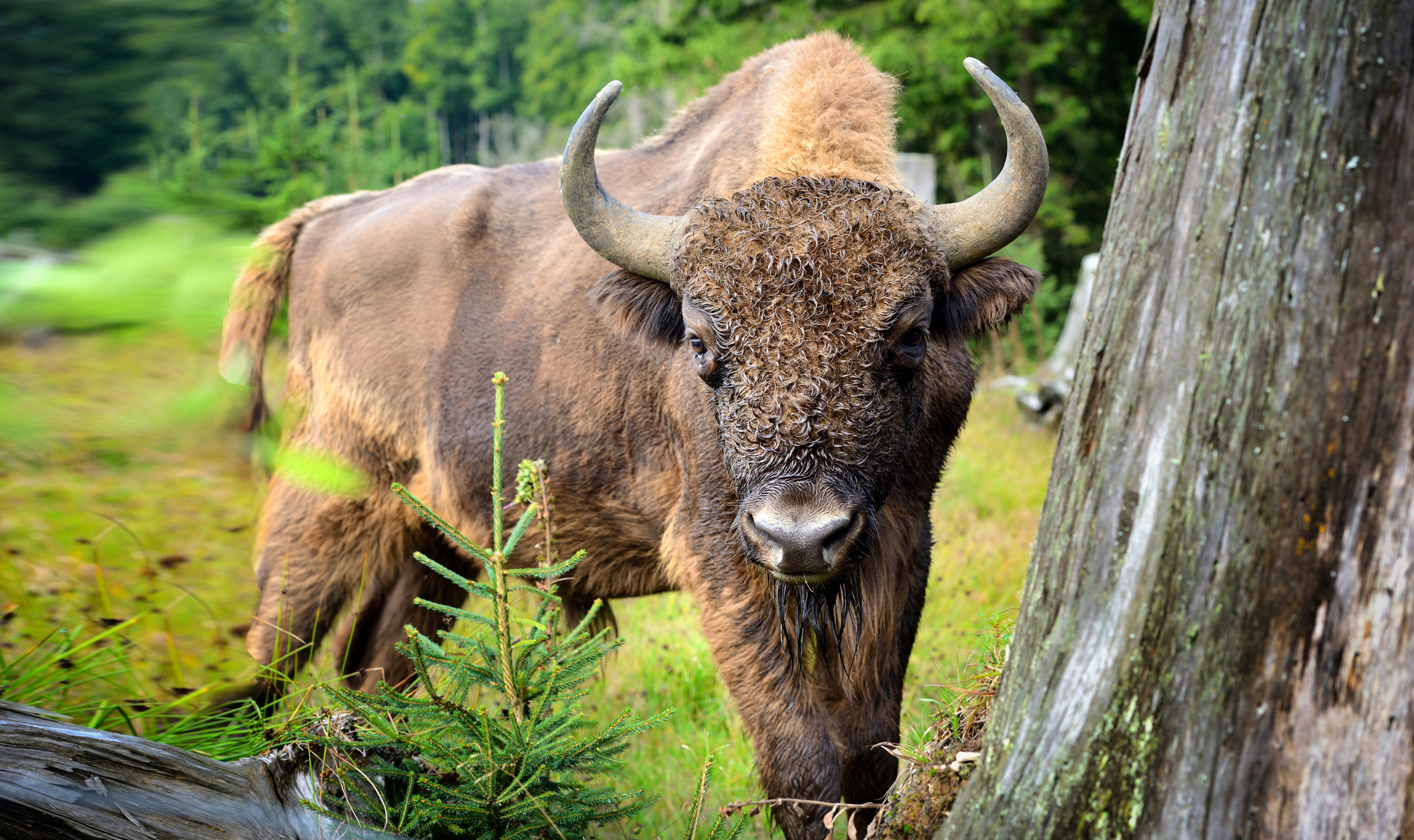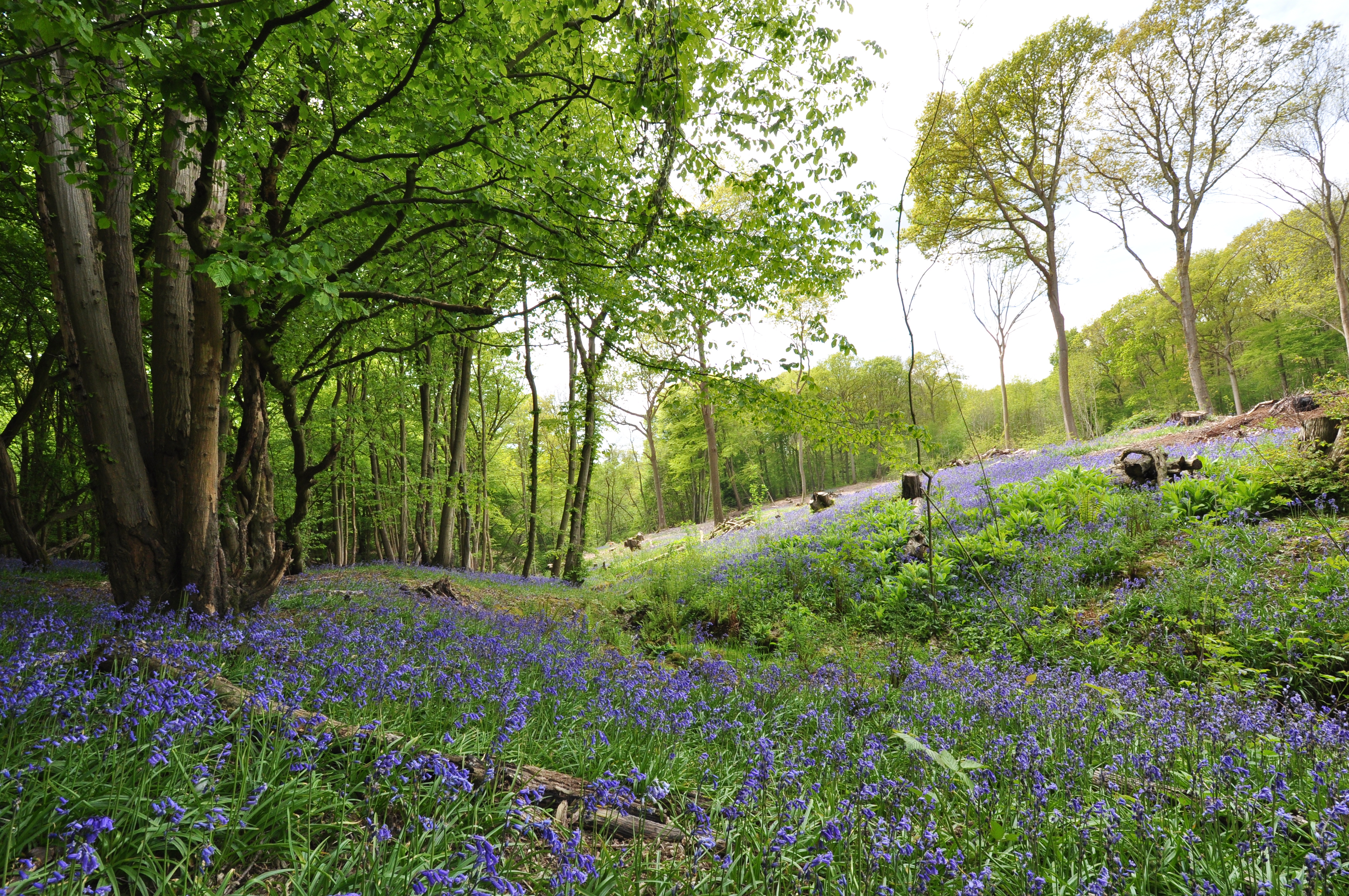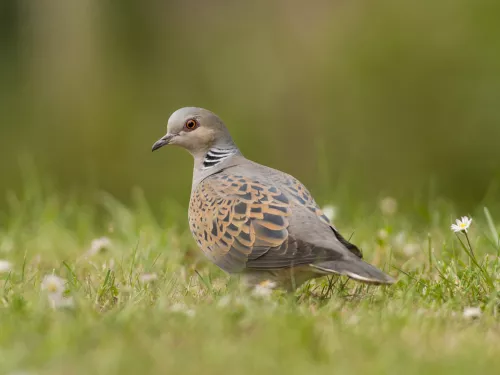Felling
In the areas that have been planted with non-native conifers (mostly Corsican pine at West Blean), the trees are so dense that we can remove trees a little more quickly. We still can’t remove them all at once as the change would be too great for the wildlife that has managed to survive here, but more are taken out at once to allow more light in and allow the native tree seeds to start germinating.
Unlike broadleaf trees, conifers do not coppice in the same way, so once they are felled the native trees can start to take hold.
As with the oak trees, this timber can go into useful products that lock up carbon.
Pollarding
Structurally diverse woodlands that have a wide range of micro-habitats tend to have more biodiversity. Structural diversity means that there are, for example, trees of different ages (which is not the case in a beech or conifer plantation), but also different physical ‘layers’: leaf litter and soil, ground vegetation, understorey of saplings and shrubs, taller coppice and young trees, and then the woodland canopy.
Micro-habitats include standing and lying deadwood, damp and shady areas, sunny, sheltered glades, scrub, ponds, standards (single stem trees or timber trees as they are sometimes known), veteran trees, pollards and coppice stools.
Research indicates that many species prefer to live in the first ten meters from a woodland edge, where there is more sunlight. Coppicing and creating rides and glades can enhance the biodiversity of a woodland by increasing the levels of light, rejuvenating individual trees and allowing shorter vegetation and shrubs to grow, thus creating more structural diversity and micro-habitats for more species to thrive.
Dormice and other small mammals, and invertebrates like dragonflies, forage for insects along woodland rides. Reptiles bask in the shorter, warmer grassland areas (with scrub and tall grassland for cover nearby). Butterflies and moths will benefit from an increase in wildflowers and grasses, since many species have specific larval foodplant requirements and are reliant on nectar for food. Other species such as bumblebees will also benefit from an increase in nectar and pollen-rich plants.
As long as there is no risk of a tree falling on somebody, leaving a dead or dying tree standing can really benefit woodland wildlife. Dead wood will provide food for hundreds of types of animal, fungus, lichen and moss.
Fungi softens the wood of dead trees through decay, and beetle larvae start chewing it up. In turn, the beetles provide food for woodpeckers, which make nest holes in the rotting wood. Meanwhile, holes that form where old broken branches have decayed provide crevices for bats and birds to roost.
